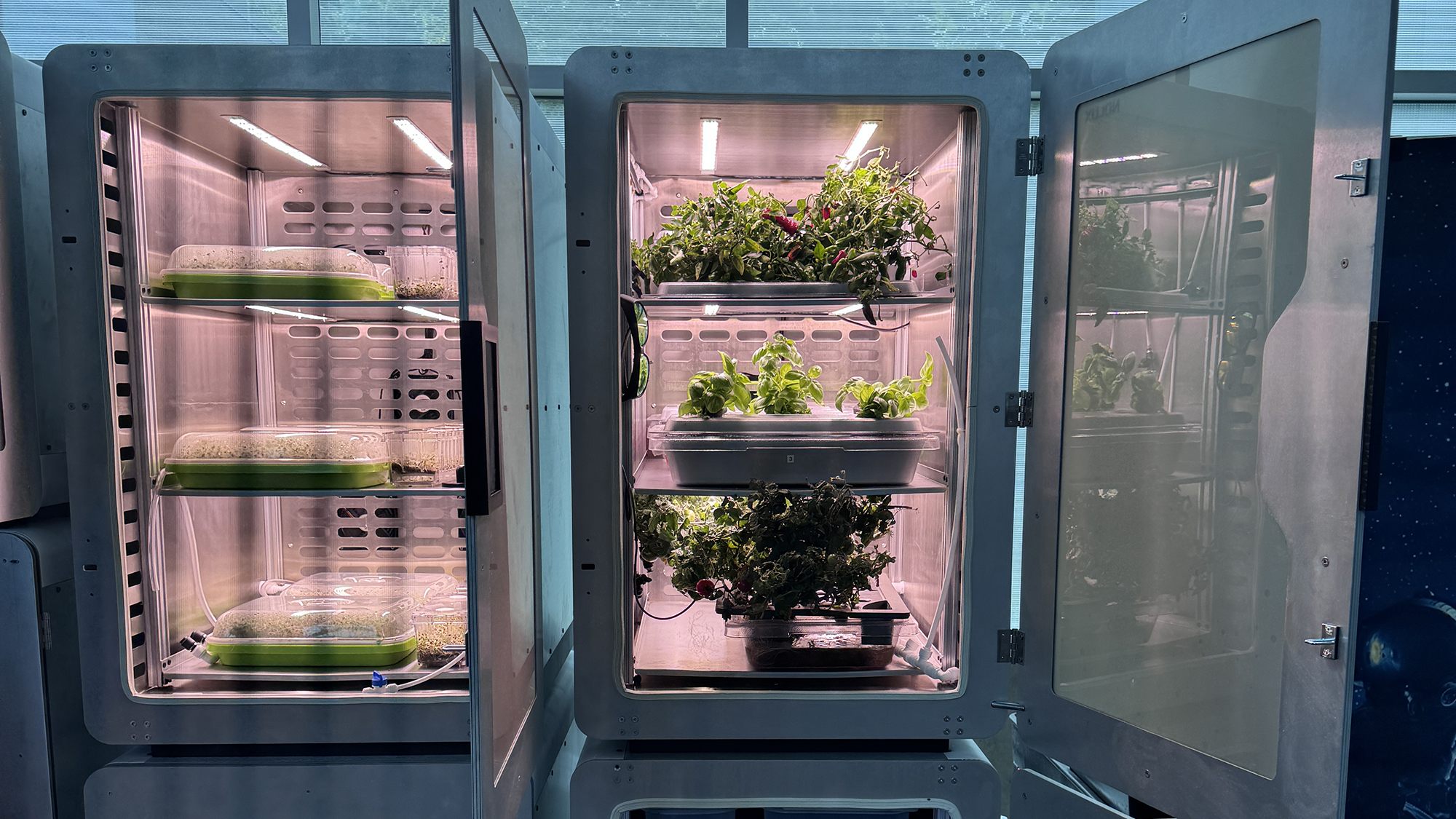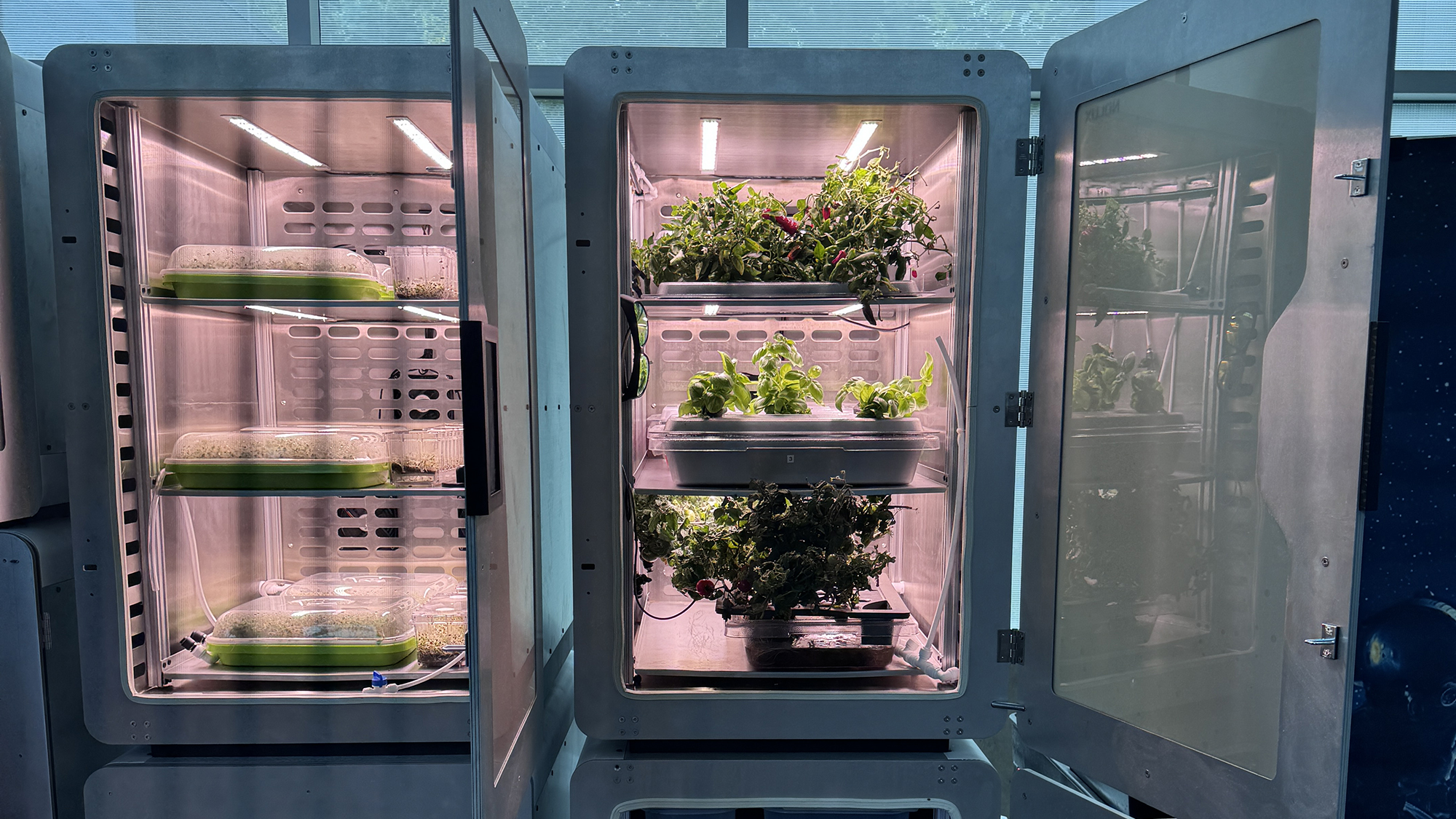
Plants use photosynthesis to convert carbon dioxide (CO2) into molecules that they can metabolize. However, this isn’t the only process that can generate these molecules—and a new paper, published October 23 in Joule, examines the possibility of providing nutrition to plants via a process that would allow them to grow without photosynthesis at all.
If this could be achieved, it would allow plants to grow without sunlight, opening the door to what the paper calls “electro-agriculture”. The paper foresees a utopian future where crops could be grown in all sorts of locations where agriculture is currently impossible—the paper cites “urban centers, arid deserts, and even outer space environments” as possibilities—while vast swathes of land currently used for agriculture could be replanted with trees. It also speculates about the possibility of using the technology in space and/or on Mars.
The technique behind these lofty goals is a relatively mundane one: electrolysis, which is the use of an electric current to drive a chemical reaction. The process is hundreds of years old—it was pioneered in the late 18th century, and famously used by British chemist Sir Humphry Davy to isolate multiple new elements in the early 1800s. Today it’s used for all manner of things, from refining metals to hair removal.
Electrolysis of CO2 creates a variety of basic hydrocarbons and related simple molecules; examples include methanol, ethanol, ethylene, formate, and acetate. However, not all these can be metabolized by plants, and the ones that can—ethanol and acetate—are relatively difficult to produce.
As Feng Jiao, one of the paper’s co-authors, explains to Popular Science, “In basic CO2 electrolysis, acetate is a minor product, with a selectivity of less than 10%.” For electrolysis to be a viable source of plant nutrition, this figure would need to be increased significantly. The paper describes a key advance in this area: the use of a two-step approach, which the researchers call a “tandem electrolysis process”. In this process, CO2 is first reduced to carbon monoxide (CO). The second step involves the conversion of CO into acetate.
This avoids a problem with direct conversion of CO2 to acetate: CO2 is an acidic gas, while acetate—as an anion—is basic. By contrast, CO is not acidic, and as Jiao explains, “The resulting high pH … promotes acetate formation during the electrocatalytic CO reduction reaction. This is why the tandem process shows much higher efficiency in acetate production.” How much higher? Jiao says, “The … process can achieve an acetate selectivity of nearly 90%.”
The remaining 10% is byproducts, largely ethylene and hydrogen. Both, as Jiao points out, can be put to good use: “[Ethylene and hydrogen] are widely used commodity chemicals in industry and can be repurposed for other applications, such as converting ethylene into plastics and polymers.”
Of course, as the name suggests, electrolysis requires electricity. In this respect, electro-agriculture would differ fundamentally from conventional agriculture: although farms obviously consume electricity, at the most basic level, photosynthesis requires no power.
In an ideal world, Jiao says, the power for electro-agriculture would come from renewable sources, although he concedes that it wouldn’t have to: “The electricity can be sourced from the existing grid and doesn’t necessarily need to be renewable.” The paper envisages plants being grown in layered structures topped with rooftop solar panels. (Using solar energy would also be beneficial, Jiao says, because “some plants may grow better under low-light conditions compared to complete darkness.”)
Deploying electro-agriculture at scale, however, would require a lot of solar panels. The paper estimates that to feed the entire USA using the tandem process, electro-agriculture would require 19,600 TWh a year—almost five times the USA’s entire power demand in 2023.
Of course, no-one is advocating for the wholesale electrolysis-based restructuring of the US food chain, and electro-agriculture could be deployed at much smaller scales to allow food to be grown in, say, urban food deserts. Beyond such applications, though, the obvious question is whether there’s any advantage to using solar energy for electrolysis, instead of just allowing plants to use it for photosynthesis.
The paper notes that in and of itself, electrolysis is a markedly more efficient process than photosynthesis: “Using the same primary inputs as photosynthesis (CO2, sunlight, and water), electro-agriculture offers at least a four-fold improvement in solar-to-food efficiency over traditional farming.” It could also provide other benefits like reducing fertilizer runoff: Jiao says that “when plants are grown in a controlled environment, fertilizer utilization can be significantly improved by preventing runoff. Combined with a high solar energy-to-biomass efficiency, [electro-agriculture] could reduce fertilizer waste by as much as 90%.”
Beyond the question of power, the other pressing question about electro-agriculture’s viability is that of where the CO2 would come from. Plants grown in the open air photosynthesize atmospheric CO2, but electro-agriculture would require dedicated sources of the gas. The paper examines how much of the US population could be fed by capturing the 963 Mt of CO2 currently generated by powering the US industrial sector, arriving at a figure of 56% of the population. Extrapolating this to the amount of CO2 required to feed the entire US population gives a figure of 1,719 Mt.
Again, this is a large amount: for comparison, the net emissions of the entire USA in 2024 were 5,489 Mt of CO2-equivalent. In theory, this seems like a perfect use for those emissions, but while carbon capture and storage has long been proposed as a magic bullet for climate change, in 2024 it remains very much a hypothetical solution: there are only 50 operating CCS projects in the entire world, and they can capture a total of 51 Mt of CO2 per annum.
Despite the paper’s visions of a future where “half of [the USA’s] land [could be freed] for ecosystem restora-tion and natural carbon sequestration,” the idea of using electrolysis as a wholesale replacement for conventional agriculture seems a long way off—on earth, at least. As the paper notes, the Martian atmosphere is 95% CO2, which perhaps hints at another reason why “much recent work has sought to push electro-ag technology toward commercialization.”
Back on planet Earth, it seems fair to say that while the dramatic improvements in the efficiency of acetate production make CO2 electrolysis a promising prospect, there are significant challenges to its implementation. Jiao predicts that the new technique could find some niche uses within a decade, but ultimately, “The cultivation of plants without light is still in its early stages. Further research and development are necessary to fully commercialize this technology and realize its full potential.”

